Mind Control Theories and Techniques used by Mass Media
Mass media is the most powerful tool used by the ruling
class to manipulate the masses. It shapes and molds opinions and
attitudes and defines what is normal and acceptable. This article looks
at the workings of mass media through the theories of its major
thinkers, its power structure and the techniques it uses, in order to
understand its true role in society.

- Image source deesillustration.com

Most of the articles on this site
discuss occult symbolism found in objects of popular culture. From these
articles arise many legitimate questions relating to the purpose of
those symbols and the motivations of those who place them there, but it
is impossible for me to provide satisfactory answers to these questions
without mentioning many other concepts and facts. I’ve therefore decided
to write this article to supply the theoretical and methodological
background of the analyzes presented on this site as well as introducing
the main scholars of the field of mass communications. Some people read
my articles and think I’m saying “Lady Gaga wants to control our
minds”. That is not the case. She is simply a small part of the huge
system that is the mass media.
Programming Through Mass Media
Mass media are media forms designed to reach the largest audience
possible. They include television, movies, radio, newspapers, magazines,
books, records, video games and the internet. Many studies have been
conducted in the past century to measure the effects of mass media on
the population in order to discover the best techniques to influence it.
From those studies emerged the science of Communications, which is used
in marketing, public relations and politics. Mass communication is a
necessary tool to insure the functionality of a large democracy; it is
also a necessary tool for a dictatorship. It all depends on its usage.
In the 1958 preface for A Brave New World, Aldous Huxley
paints a rather grim portrait of society. He believes it is controlled
by an “impersonal force”, a ruling elite, which manipulates the
population using various methods.
“Impersonal forces over which we have almost no control seem to be pushing us all in the direction of the Brave New Worldian nightmare; and this impersonal pushing is being consciously accelerated by representatives of commercial and political organizations who have developed a number of new techniques for manipulating, in the interest of some minority, the thoughts and feelings of the masses.”
- Aldous Huxley, Preface to A Brave New World
His bleak outlook is not a simple hypothesis or a paranoid delusion.
It is a documented fact, present in the world’s most important studies
on mass media. Here are some of them:
Elite Thinkers
Walter Lippmann
Walter Lippmann, an American intellectual, writer and two-time
Pulitzer Prize winner brought forth one of the first works concerning
the usage of mass media in America. In Public Opinion (1922),
Lippmann compared the masses to a “great beast” and a “bewildered herd”
that needed to be guided by a governing class. He described the ruling
elite as “a specialized class whose interests reach beyond the locality.”
This class is composed of experts, specialists and bureaucrats.
According to Lippmann, the experts, who often are referred to as
“elites,” are to be a machinery of knowledge that circumvents the
primary defect of democracy, the impossible ideal of the “omnicompetent
citizen.” The trampling and roaring “bewildered herd” has its function:
to be “the interested spectators of action,” i.e. not participants. Participation is the duty of “the responsible man”, which is not the regular citizen.
Mass media and propaganda are therefore tools that must be used by
the elite to rule the public without physical coercion. One important
concept presented by Lippmann is the “manufacture of consent”, which is,
in short, the manipulation of public opinion to accept the elite’s
agenda. It is Lippmann’s opinion that the general public is not
qualified to reason and to decide on important issues. It is therefore
important for the elite to decide ”for its own good” and then sell those
decisions to the masses.
“That the manufacture of consent is capable of great refinements no one, I think, denies. The process by which public opinions arise is certainly no less intricate than it has appeared in these pages, and the opportunities for manipulation open to anyone who understands the process are plain enough. . . . as a result of psychological research, coupled with the modern means of communication, the practice of democracy has turned a corner. A revolution is taking place, infinitely more significant than any shifting of economic power. . . . Under the impact of propaganda, not necessarily in the sinister meaning of the word alone, the old constants of our thinking have become variables. It is no longer possible, for example, to believe in the original dogma of democracy; that the knowledge needed for the management of human affairs comes up spontaneously from the human heart. Where we act on that theory we expose ourselves to self-deception, and to forms of persuasion that we cannot verify. It has been demonstrated that we cannot rely upon intuition, conscience, or the accidents of casual opinion if we are to deal with the world beyond our reach.”
–Walter Lippmann, Public Opinion
It might be interesting to note that Lippmann is one of the founding
fathers of the Council on Foreign Relations (CFR), the most influential
foreign policy think tank in the world. This fact should give you a
small hint of the mind state of the elite concerning the usage of media.
“Political and economic power in the United States is concentrated in the hands of a “ruling elite” that controls most of U.S.-based multinational corporations, major communication media, the most influential foundations, major private universities and most public utilities. Founded in 1921, the Council of Foreign Relations is the key link between the large corporations and the federal government. It has been called a “school for statesmen” and “comes close to being an organ of what C. Wright Mills has called the Power Elite – a group of men, similar in interest and outlook shaping events from invulnerable positions behind the scenes. The creation of the United Nations was a Council project, as well as the International Monetary Fund and the World Bank.”
- Steve Jacobson, Mind Control in the United States
Some current members of the CFR include David Rockefeller, Dick
Cheney, Barack Obama, Hilary Clinton, mega-church pastor Rick Warren and
the CEOs of major corporations such as CBS, Nike, Coca-Cola and Visa.
Carl Jung
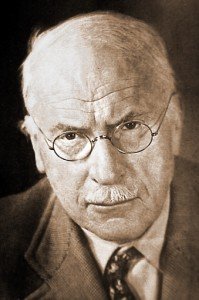
Carl Jung is the founder of analytical psychology (also known an
Jungian psychology), which emphasizes understanding the psyche by
exploring dreams, art, mythology, religion, symbols and philosophy. The
Swiss therapist is at the origin of many psychological concepts used
today such as the Archetype, the Complex, the Persona, the
Introvert/Extrovert and Synchronicity. He was highly influenced by the
occult background of his family. Carl Gustav, his grandfather, was an
avid Freemason (he was Grand Master) and Jung himself discovered that
some of his ancestors were Rosicrucians. This might explain his great
interest in Eastern and Western philosophy, alchemy, astrology and
symbolism. One of his most important (and misunderstood) concept was
the Collective Unconscious.
“My thesis, then, is as follows: In addition to our immediate consciousness, which is of a thoroughly personal nature and which we believe to be the only empirical psyche (even if we tack on the personal unconscious as an appendix), there exists a second psychic system of a collective, universal, and impersonal nature which is identical in all individuals. This collective unconscious does not develop individually but is inherited. It consists of pre-existent forms, the archetypes, which can only become conscious secondarily and which give definite form to certain psychic contents.”
- Carl Jung, The Concept of the Collective Unconscious
The collective unconscious transpires through the existence of
similar symbols and mythological figures in different civilizations. Archetypal symbols seem
to be embedded in our collective subconscious, and, when exposed to
them, we demonstrate natural attraction and fascination. Occult symbols
can therefore exert a great impact on people, even if many individuals
were never personally introduced to the symbol’s esoteric meaning. Mass
media thinkers, such as Edward D. Bernays, found in this concept a great
way to manipulate the public’s personal and collective unconscious.
Edward Bernays
Edward Bernays is considered to be the “father of public relations”
and used concepts discovered by his uncle Sigmund Freud to manipulate
the public using the subconscious. He shared Walter Lippmann’s view of
the general population by considering it irrational and subject to the
“herd instinct”. In his opinion, the masses need to be manipulated by an
invisible government to insure the survival of democracy.
“The conscious and intelligent manipulation of the organized habits and opinions of the masses is an important element in democratic society. Those who manipulate this unseen mechanism of society constitute an invisible government which is the true ruling power of our country.
We are governed, our minds are molded, our tastes formed, our ideas suggested, largely by men we have never heard of. This is a logical result of the way in which our democratic society is organized. Vast numbers of human beings must cooperate in this manner if they are to live together as a smoothly functioning society.
Our invisible governors are, in many cases, unaware of the identity of their fellow members in the inner cabinet.”
- Edward Bernays, Propaganda
Bernay’s trailblazing marketing campaigns profoundly changed the
functioning of American society. He basically created “consumerism” by
creating a culture wherein Americans bought for pleasure instead of
buying for survival. For this reason, he was considered by Life Magazine to be in the Top 100 most influential Americans of the 20th century.
Harold Lasswell
In 1939-1940, the University of Chicago was the host of a series of
secret seminars on communications. These think tanks were funded by the
Rockefeller foundation and involved the most prominent researchers in
the fields of communications and sociological studies. One of these
scholars was Harold Lasswell, a leading American political scientist and
communications theorist, specializing in the analysis of propaganda. He
was also of the opinion that a democracy, a government ruled by the
people, could not sustain itself without a specialized elite shaping and
molding public opinion through propaganda.
In his Encyclopaedia of the Social Sciences, Lasswell explained that when elites lack the requisite force to compel obedience, social managers must turn to “a whole new technique of control, largely through propaganda.” He added the conventional justification: we must recognize the “ignorance
and stupidity [of] … the masses and not succumb to democratic
dogmatisms about men being the best judges of their own interests.”
Lasswell extensively studied the field of content analysis in order
to understand the effectiveness of different types of propaganda. In
his essay Contents of Communication, Lasswell explained that,
in order to understand the meaning of a message (i.e. a movie, a speech,
a book, etc.), one should take into account the frequency with which
certain symbols appear in the message, the direction in which the
symbols try to persuade the audience’s opinion, and the intensity of the
symbols used.
Lasswell was famous for his media analysis model based on:
Who (says) What (to) Whom (in) What Channel (with) What Effect
By this model, Lasswell indicates that in order to properly analyze a media product, one must look at who produced the product (the people who ordered its creation), who was it aimed at (the target audience) and what were the desired effects of this product (to inform, to convince, to sell, etc.) on the audience.
Using a Rihanna video as an example, the analysis would be as
follows: WHO PRODUCED: Vivendi Universal; WHAT: pop artist Rihanna; TO
WHOM: consumers between the ages of 9 and 25; WHAT CHANNEL: music video;
and WHAT EFFECT: selling the artist, her song, her image and her
message.
The analyzes of videos and movies on The Vigilant Citizen
place a great importance on the “who is behind” the messages
communicated to the public. The term “Illuminati” is often used to
describe this small elite group covertly ruling the masses. Although the
term sounds quite caricatured and conspiratorial, it aptly describes
the elite’s affinities with secret societies and occult knowledge.
However, I personally detest using the term “conspiracy theory” to
describe what is happening in the mass media. If all the facts
concerning the elitist nature of the industry are readily available to
the public, can it still be considered a “conspiracy theory”?
There used to be a variety of viewpoints, ideas and opinions in
popular culture. The consolidation of media corporations has, however,
produced a standardization of the cultural industry. Ever wondered why
all recent music sounds the same and all recent movies look the same?
The following is part of the answer:
Media Ownership
As depicted in the graph above, the number of corporations owning the
majority of U.S. media outlets went from 50 to 5 in less than 20 years.
Here are the top corporations evolving around the world and the assets
they own.
“A list of the properties controlled by AOL Time Warner takes ten typed pages listing 292 separate companies and subsidiaries. Of these, twenty-two are joint ventures with other major corporations involved in varying degrees with media operations. These partners include 3Com, eBay, Hewlett-Packard, Citigroup, Ticketmaster, American Express, Homestore, Sony, Viva, Bertelsmann, Polygram, and Amazon.com. Some of the more familiar fully owned properties of Time Warner include Book-of-the-Month Club; Little, Brown publishers; HBO, with its seven channels; CNN; seven specialized and foreign-language channels; Road Runner; Warner Brothers Studios; Weight Watchers; Popular Science; and fifty-two different record labels.”
- Ben Bagdikan, The New Media Monopoly
AOL Time Warner owns:
- 64 magazines, including Time, Life, People, MAD Magazine and DC Comics
- Warner Bros, New Line and Fine Line Features in cinema
- More than 40 music labels including Warner Bros, Atlantic and Elektra
- Many television networks such as WB Networks, HBO, Cinemax, TNT, Cartoon Network and CNN
- Madonna, Sean Paul, The White Stripes
- CBS, MTV, MTV2, UPN, VH1, Showtime, Nickelodeon, Comedy Central, TNN, CMT and BET
- Paramount Pictures, Nickelodeon Movies, MTV Films
- Blockbuster Videos
- 1800 screens in theaters through Famous Players
“Disney ownership of a hockey team called The Mighty Ducks of Anaheim does not begin to describe the vastness of the kingdom. Hollywood is still its symbolic heart, with eight movie production studios and distributors: Walt Disney Pictures, Touchstone Pictures, Miramax, Buena Vista Home Video, Buena Vista Home Entertainment, Buena Vista International, Hollywood Pictures, and Caravan Pictures.
The Walt Disney Company controls eight book house imprints under Walt Disney Company Book Publishing and ABC Publishing Group; seventeen magazines; the ABC Television Network, with ten owned and operated stations of its own including in the five top markets; thirty radio stations, including all the major markets; eleven cable channels, including Disney, ESPN (jointly), A&E, and the History Channel; thirteen international broadcast channels stretching from Australia to Brazil; seven production and sports units around the world; and seventeen Internet sites, including the ABC group, ESPN.sportszone, NFL.com, NBAZ.com, and NASCAR.com. Its five music groups include the Buena Vista, Lyric Street, and Walt Disney labels, and live theater productions growing out of the movies The Lion King, Beauty and the Beast, and King David.”
- Ibid
The Walt Disney Company owns:
- ABC, Disney Channel, ESPN, A&E, History Channel
- Walt Disney Pictures, Touchstone Pictures, Hollywood Pictures, Miramax Film Corp., Dimension and Buena Vista International
- Miley Cyrus/ Hannah Montana, Selena Gomez, Jonas Brothers
Vivendi Universal owns:
- 27% of US music sales, labels include: Interscope, Geffen, A&M, Island, Def Jam, MCA, Mercury, Motown and Universal
- Universal Studios, Studio Canal, Polygram Films, Canal +
- Numerous internet and cell phone companies
- Lady Gaga, The Black Eyed Peas, Lil Wayne, Rihanna, Mariah Carey, Jay-Z
Sony owns:
- Columbia Pictures, Screen Gems, Sony Pictures Classics
- 15% of US Music sales, labels include Columbia, Epic, Sony, Arista, Jive and RCA Records
- Beyonce, Shakira, Michael Jackson, Alicia Keys, Christina Aguilera
A limited number of actors in the cultural industry means a limited
amount of viewpoints and ideas making their way to the general public.
It also means that a single message can easily saturate all forms of
media to generate consent (i.e. “there are weapons of mass destruction
in Iraq”).
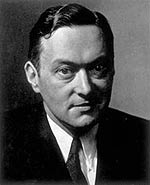
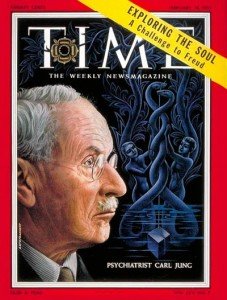
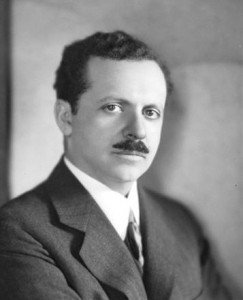
![lasswell[1]](http://vigilantcitizen.com/wp-content/uploads/2010/04/lasswell1.jpg)
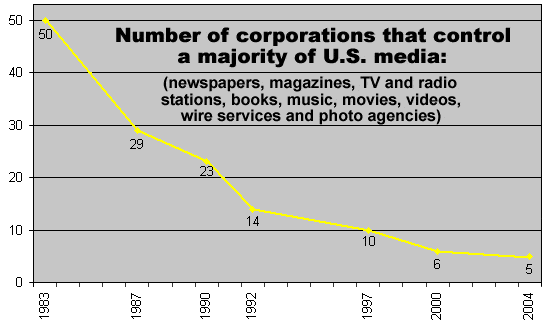


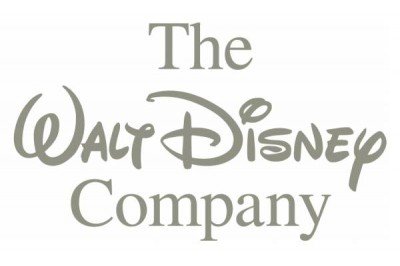
















0 comments:
Post a Comment